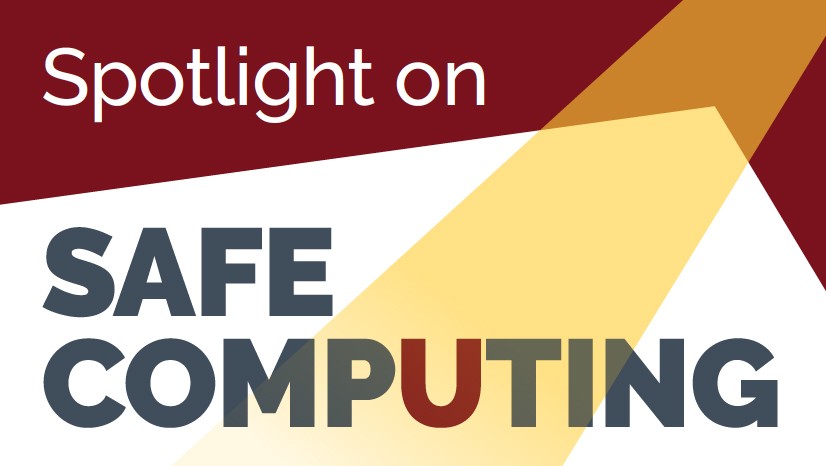
Identity theft is not a joke

Have you seen that episode of The Office where Jim impersonates Dwight for a day? He dresses like him, acts like him, and speaks like him, down to the wire-rimmed glasses and mustard-colored short-sleeved button-up. Dwight is enraged and tells Jim, "Identity theft is not a joke, Jim! Millions of families suffer every year!"
Well, Dwight is right. Identity theft is not a joke, and millions of families do suffer every year. How can you protect yourself against the criminals or jokesters of the world and safeguard your identity, especially online?
Basics of identity theft
Identity theft can range from impersonation (like Jim's joke on Dwight), to the robbery of financial information like credit card or bank account numbers, to tax fraud, where a criminal could file a tax return in your name and receive a refund on your behalf.
There are several warning signs of identity theft. It is good to keep a watchful eye on your accounts and take immediate action if anything seems incorrect. Some of the indicators may include:
- Unexplained charges or withdrawals on a bank account.
- Calls from companies or debt collectors about debts that are not yours.
- You are not receiving your bills properly - digitally or physically - or you are receiving unfamiliar bills (for example, medical expenses).
- A legitimate notice from the IRS that a return has been filed in your name or using incorrect employer information.
- Your wallet, Social Security card or number, or other personal data has been lost or stolen.
If any of these triggers happen to you, it is best to take action to prevent your identity, data, or money from being exploited.
How to protect yourself
There are many things you can do to protect yourself from identity theft.
Set a secure password for all of your online accounts, financial and otherwise. This will help you set up a stronghold against digital thieves. You should use a unique password for each account, and you should never share your passwords with others.
Be wary of online scams. December through April is an especially vulnerable time of year due to income tax season. Email scams mentioning taxes or the IRS target the public during this time. Learn more about how to spot a scam.
Use a secure connection when connecting to the internet. Revisit some tips on browsing safely and securely.
Protect your W2 and direct deposit information by activating Duo Two-Factor Protection at the University of Minnesota. Two-factor authentication adds another identifying piece of information in addition to your password and can be applied in a variety of ways to your personal and professional accounts. Learn more about Duo and opt-in today.
When in doubt, reach out. You can contact the IT Help Desk at the University of Minnesota 24/7 with questions about your digital security or University accounts at [email protected] or 612-301-4357.
What to do if it happens to you or someone you know
Sometimes no matter how secure you are online or how many preventative steps you take, you could still be a victim of identity theft. If you suspect that your information has been compromised, you must take action.
If your University of Minnesota ID or password have been jeopardized, contact [email protected] immediately. If another aspect of your data has been exposed - your credit card information, Social Security number, or other sensitive data - visit IdentityTheft.gov to report the theft and take recovery actions. IdentityTheft.gov will walk you through your reporting and recovery options, including informing companies or institutions where the fraud may have occurred, or even filing a police report. They may encourage you to close your affected accounts, institute a credit freeze, report and remove bogus charges, replace government-issued IDs, or alert the IRS of personal tax fraud.
Not all identity theft is so blatant as Jim posing as Dwight in The Office. Many instances of identity fraud attempt to slide under the radar. However, you can take your identity security into your own hands by being attentive to your digital activities and practicing safe computing anytime you're online.
More Resources
Choose Strong Passwords and Keep Them Safe
Learn how to create strong passwords and passphrases.
What to do after a data breach?
Watch this video to find out next steps if your data is exposed in a hack or security slip-up.
66 Ways to Protect Your Privacy Right Now
Consumer Reports shares 66 ways to protect your privacy right now.
Recent IRS Tax Scams
Keep up to date with current scams and know what to avoid.
Steps for Recovery
Visit IdentityTheft.gov to get an identity theft recovery plan.
Phishing.it.umn.edu
Stay up to date on the most common and recent phishing scams to target the University of Minnesota.
Safe Computing at the University of Minnesota
Explore the many ways to stay secure while online at the U.